Plant seeds, harvest crops, and nick another player's potatoes in this Stardew Valley board game
Two graphic design students have adapted the farming sim for tabletop.
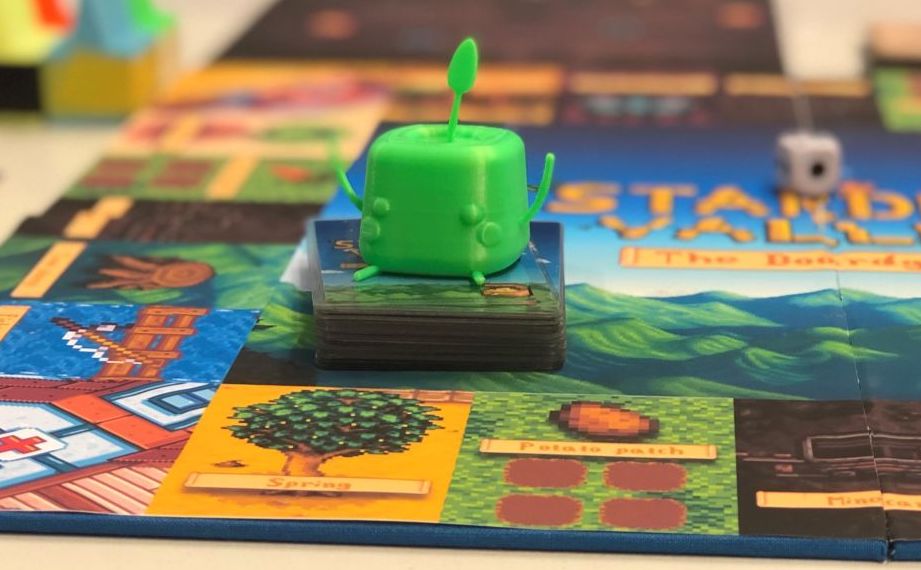
Many video games have been adapted into board games. Darksiders has a co-op exploration game where you brawl against a horde of monsters. Divinity: Original Sin has a story-led RPG. Dark Souls has a fiendishly challenging dungeon crawl (no surprise there). The list goes on: XCOM, The Witcher, Gears of War, and Doom all have board game adaptations, and let's not forget everyone's favourite, Fallout Monopoly.
These combat-heavy, monster riddled worlds lend themselves perfectly for action-packed board game adaptations, but two graphic design students, Sanna Vonk and Mikail Yucel from the Netherlands, wanted to focus on a different kind of experience for their course's project. After both enjoying the calm, relaxing world of Stardew Valley, they decided to bring the wholesome farming sim to the tabletop.
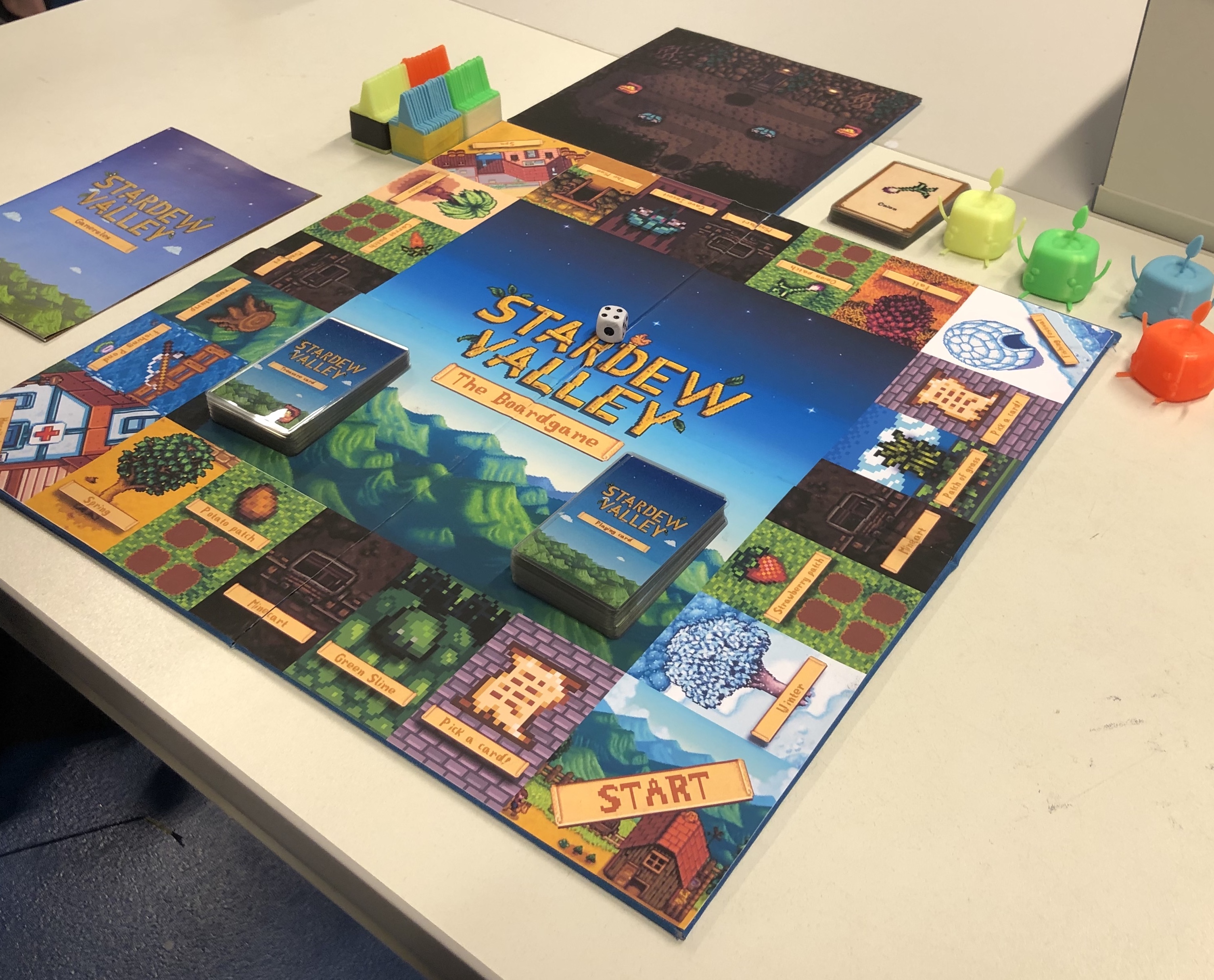
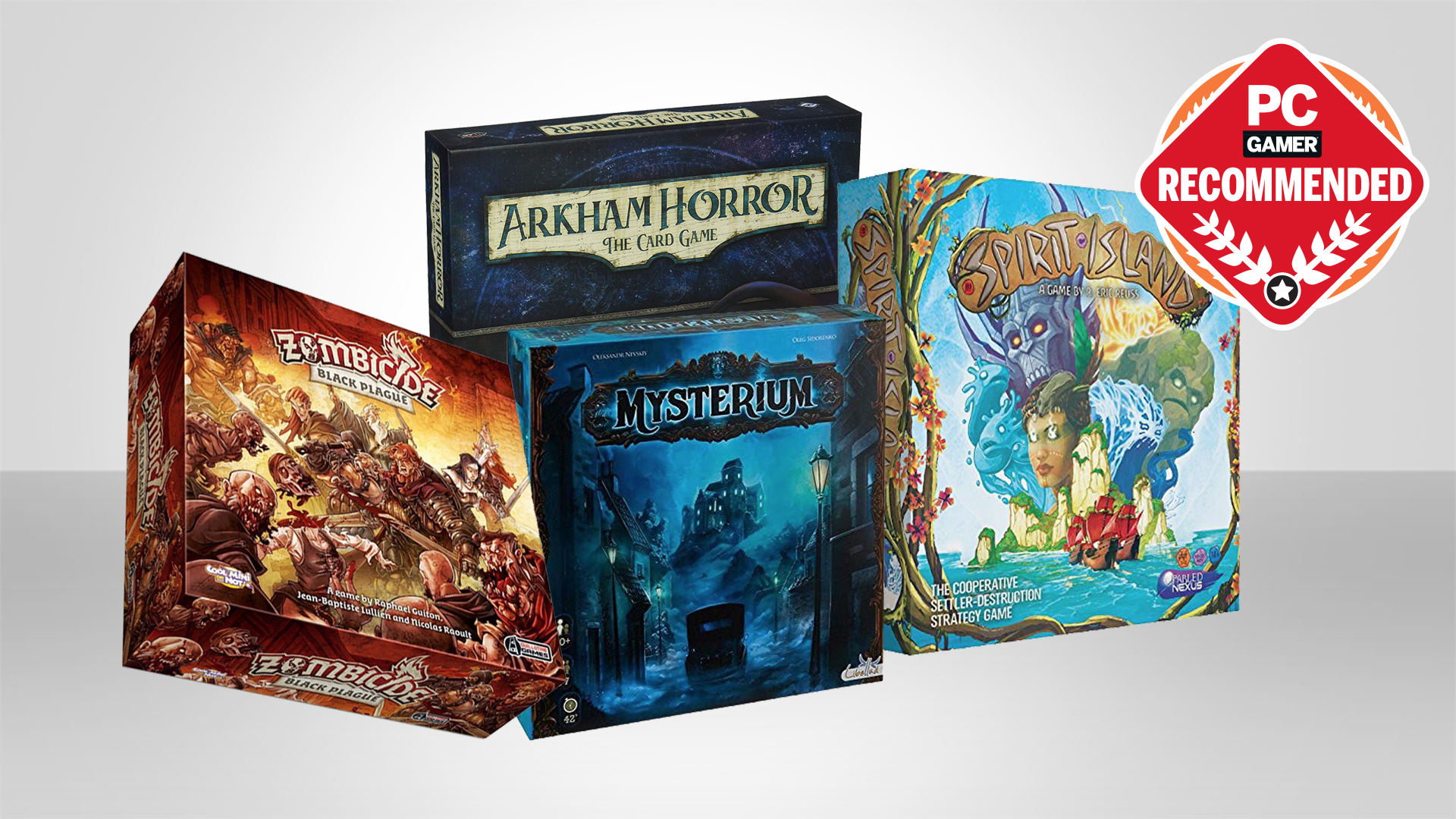
The best board games
Best cooperative board games
The best ways to play board games on PC
The 5 best solo board games
"The project task was to create a board game about whatever you wanted," Sanna says. "Since we both love videogames, we figured that making the board game about a videogame we both played would be the most fun and logical. When we got the assignment it didn't take very long to come to the conclusion to make it about Stardew Valley."
"We chose to make the game about Stardew Valley because we love the art style," Mikail says. "And the base of the game fits perfectly into a board game."
The solo-playing farming sim isn't the first game that comes to mind when thinking about board game design because of it's interconnected aspects. But Sanna and Mikail decided to narrow the focus to growing and harvesting crops with all the fun and frustration that comes with it.
The aim of Stardew Valley The Boardgame is to grow one of each crop—a carrot, potato, strawberry, and onion—before your three opponents. Drawing from a deck, you need to gather four of the same type of seed card to be able to plant that crop on the designated square. You roll a d6 and move your chosen adorable 3D printed Junimo figure around the board, then take the action that's listed on the spot you land on. Actions involve drawing cards, planting seeds, and harvesting your crops.
Collecting different cards allows you to expand on what you can do—avoiding those dastardly skip-a-turn spaces or even nicking someone else's hard-earned harvest, the most malicious of farming crimes.
The biggest gaming news, reviews and hardware deals
Keep up to date with the most important stories and the best deals, as picked by the PC Gamer team.
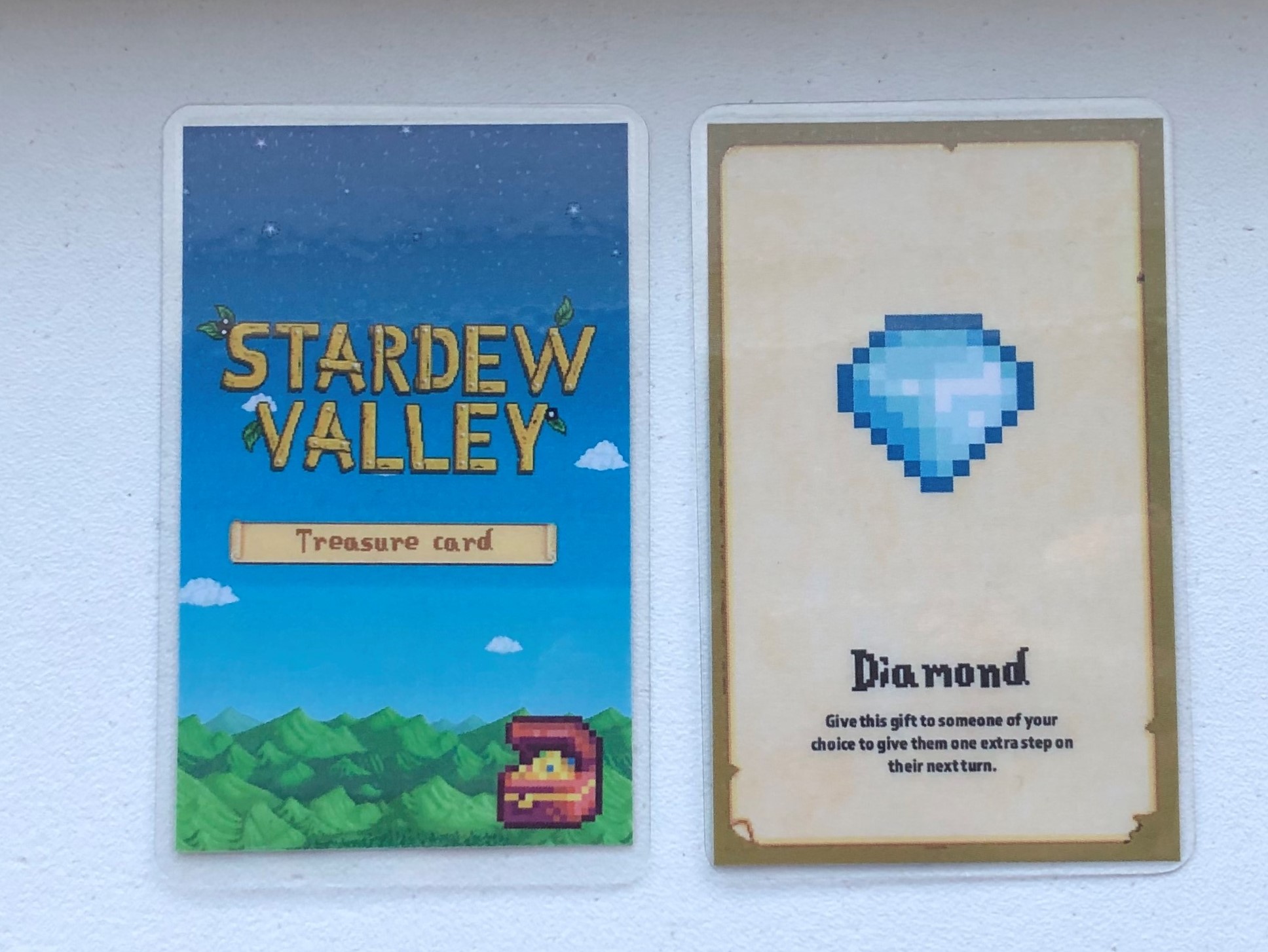
"For the look and feel of the game we were inspired by Monopoly," Sanna explains. "For the gameplay, gathering the four crops and having the possibility of stealing someone else's crops was inspired by the board game Ludo." There might not be any combat in Stardew Valley The Boardgame, but if anyone tried to nick my newly grown potatoes, I would flip the table.
Gathering the four crops and having the possibility of stealing someone else's crops, we were inspired by the board game Ludo.
Sanna Vonk
Keeping in-line with Stardew's wholesomeness, there are also nice cards too, like the Diamond that you can give to another player so they can have an extra turn. The game captures both the fun and mischief of player interaction.
It seems reasonably straightforward, but there's a twist and it's the bane of every farmer's life: seasons. If you land on one of the season spaces, your crop of the previous space will wither away and die. For example, you've finally collected four strawberry seeds and you've planted them in the strawberry patch, a bountiful crop in your sights. You roll the dice but, horror strikes: it's a one. You're forced to move onto the Winter space and now you've lost all your precious strawberry plants. Disaster.
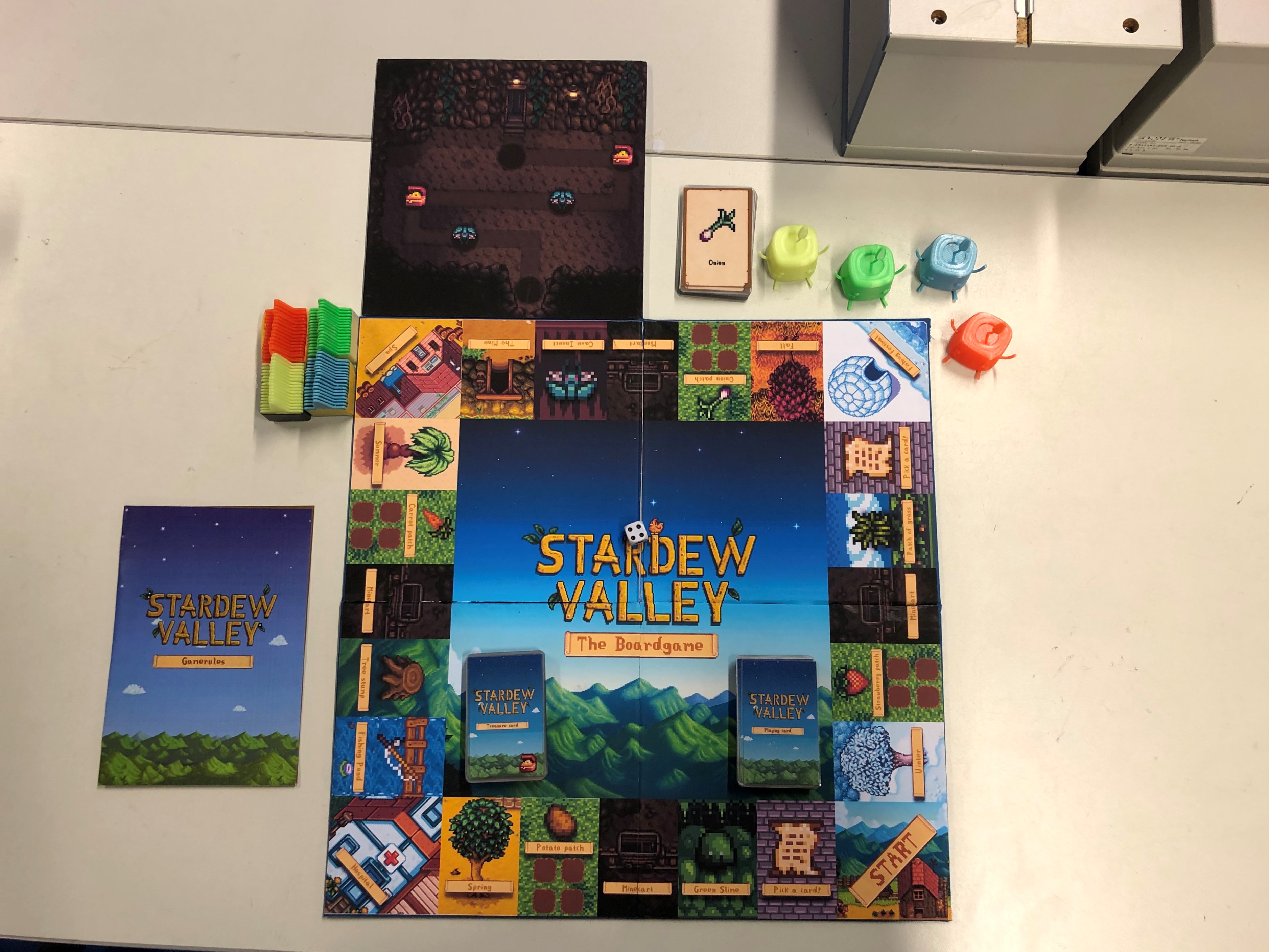
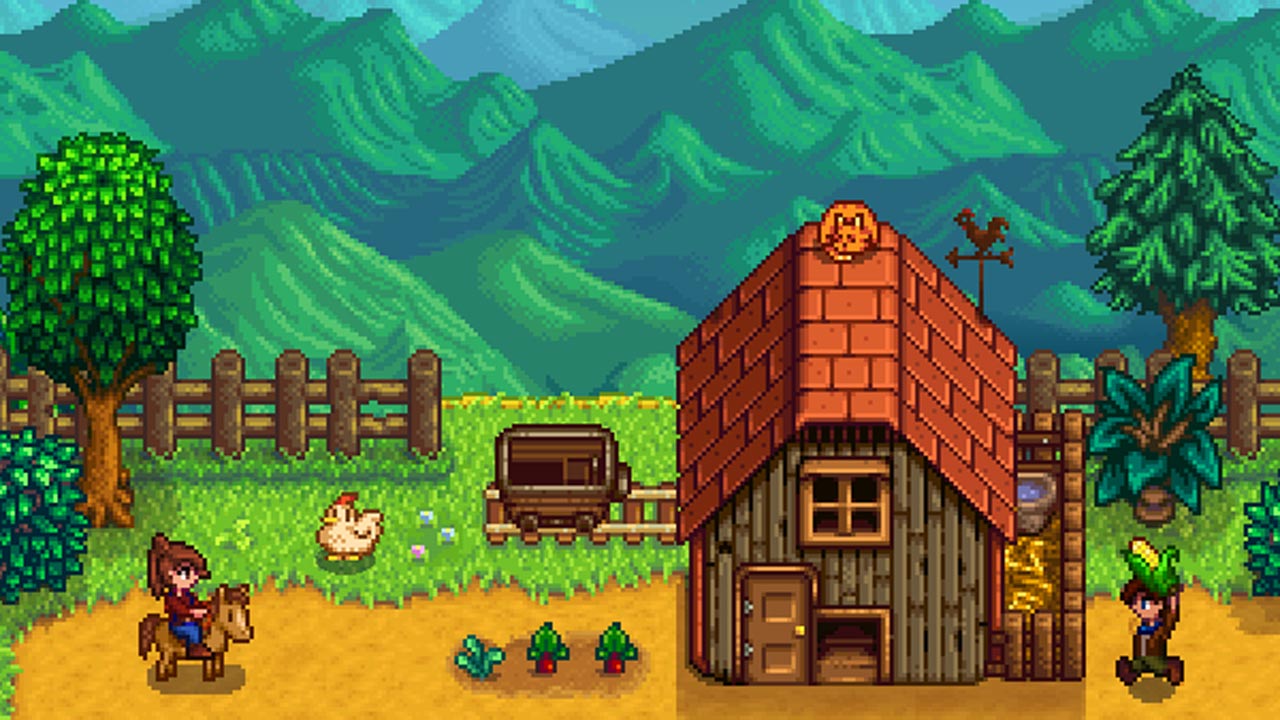
Stardew Valley mods: the best agricultural tweaks
Stardew Valley multiplayer: farm with friends
Stardew Valley tips: become a farming master
Stardew valley endgame: what to do
Stardew Valley Sebastian: schedule, gifts, and heart events Stardew Valley Leah: schedule, gifts, and heart events
It's a lesson that every player in Stardew Valley must learn, but like the videogame, if you properly prepare you'll be able to survive it. For this scenario, the greenhouse card is a lifesaver and playing it means that a crop of your choice is immune to the harshness of the seasons. Another way around mother nature's brutal force is playing cards that let you move one more space forward.
Alongside the main board is a mini-board depicting the mines, where you have the opportunity to earn some treasure cards. Try not to land on the bug enemies otherwise you'll be sent to Harvey's hospital and miss a turn while you recover. The mining board is a treacherous place, but treasure cards are worth the risk. "The treasure cards provide cards which will either positively or negatively affect the game for yourself or the other players," Mikail explains.
Treasure cards include the shipping bin that lets you trade one card with someone else, a torch that gives you the ability to go one extra step whenever you'd like, and, possibly my favourite card out of the whole deck, the Blobfish, which forces everyone to skip a turn except for you.
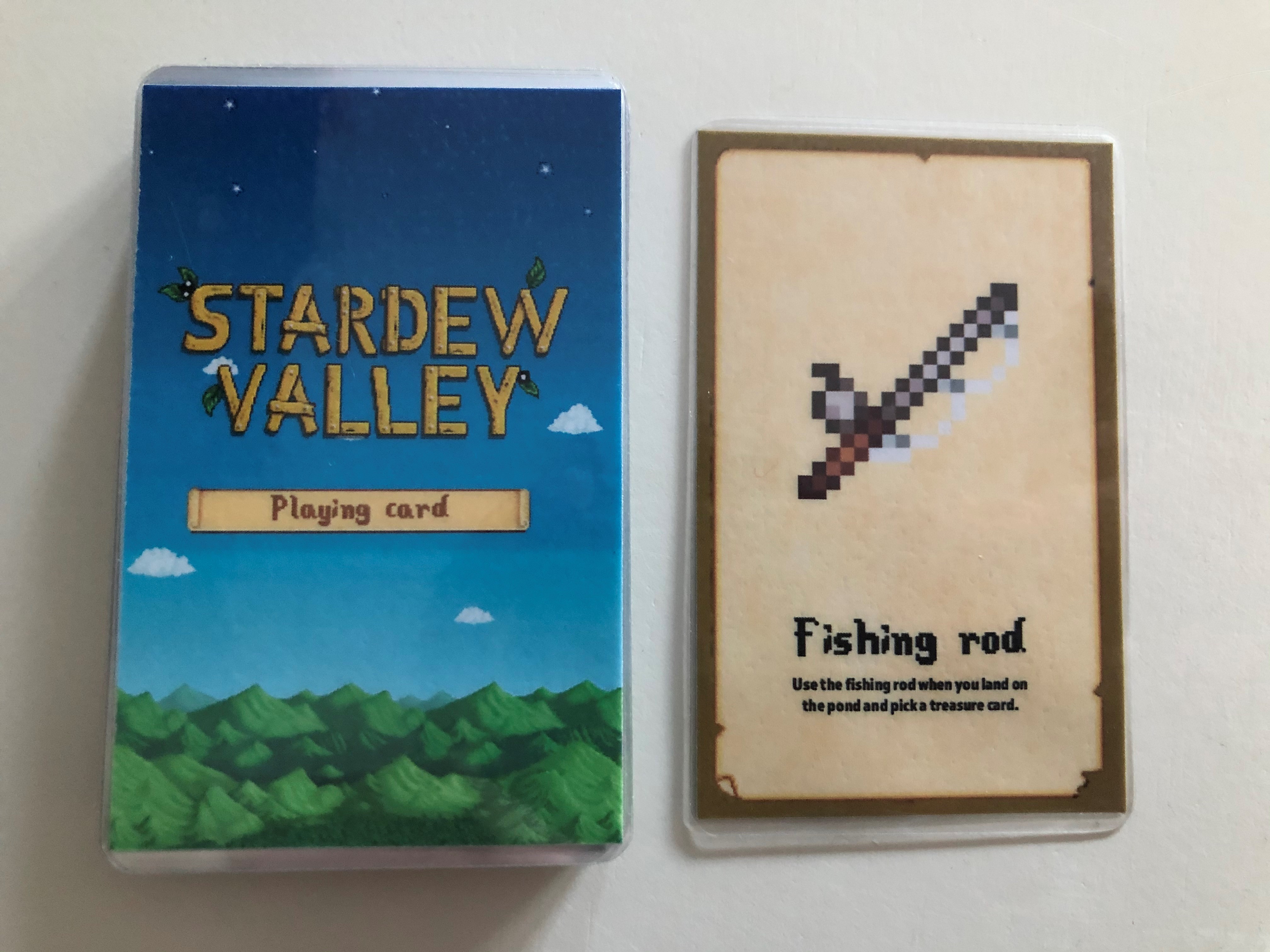
Stardew Valley The Boardgame sounds like a lot of fun. For a project made in two weeks, Sanna and Mikail's Stardew Valley looks to be an adaptation that stays true to the heart of Stardew Valley. I can just imagine playing it now, picking up the cards, moving the cute Junimo pieces around the board, and collecting my crops with Stardew's soundtrack playing softly in the background.
Rachel had been bouncing around different gaming websites as a freelancer and staff writer for three years before settling at PC Gamer back in 2019. She mainly writes reviews, previews, and features, but on rare occasions will switch it up with news and guides. When she's not taking hundreds of screenshots of the latest indie darling, you can find her nurturing her parsnip empire in Stardew Valley and planning an axolotl uprising in Minecraft. She loves 'stop and smell the roses' games—her proudest gaming moment being the one time she kept her virtual potted plants alive for over a year.


